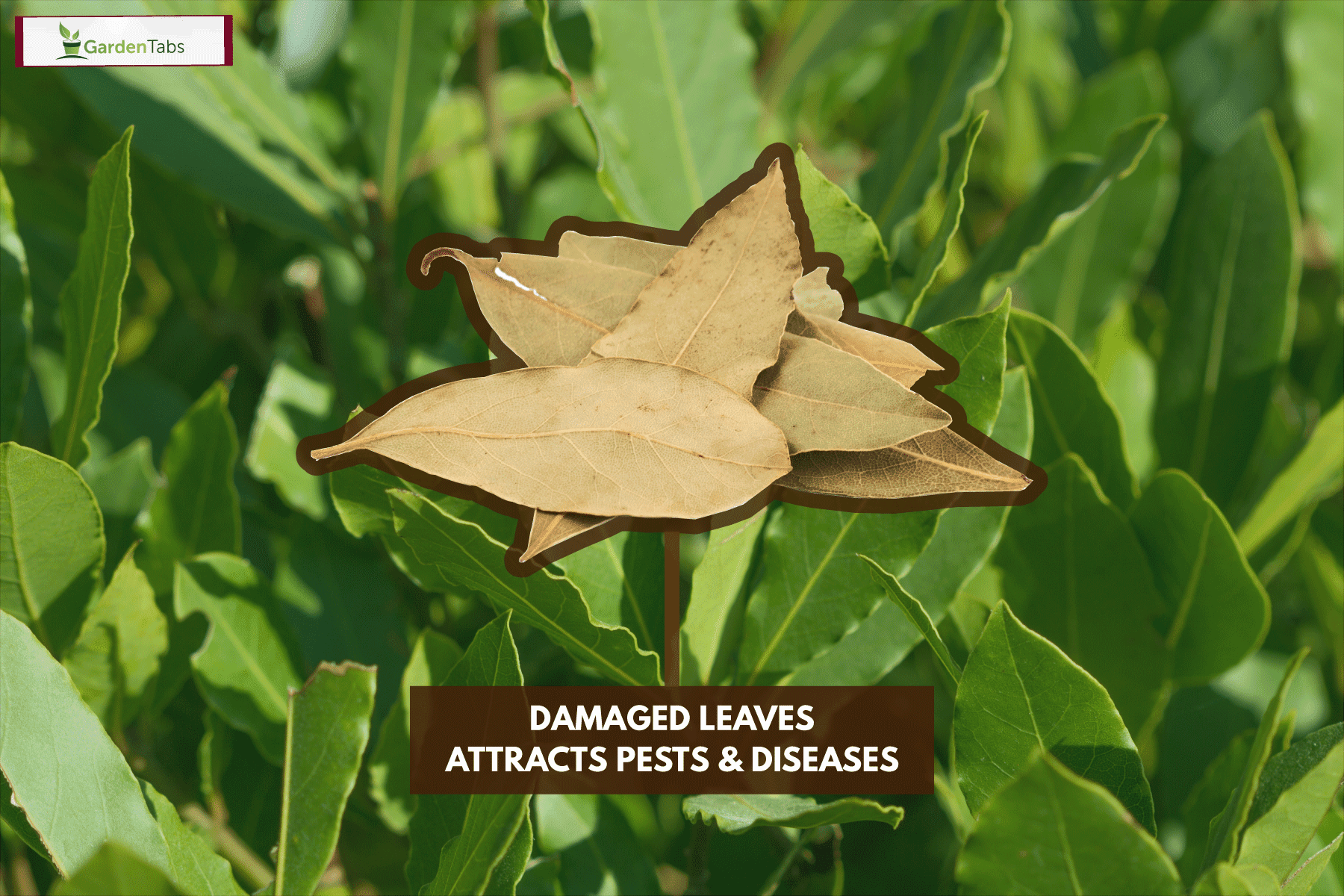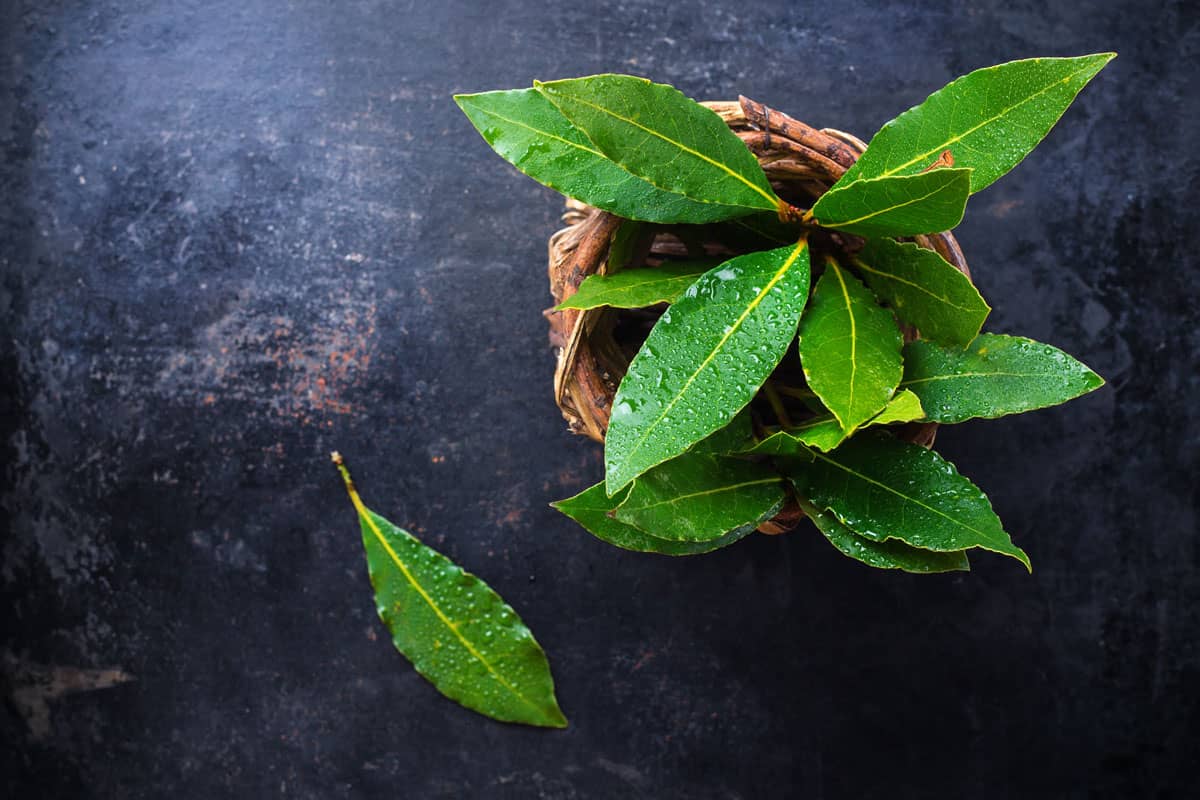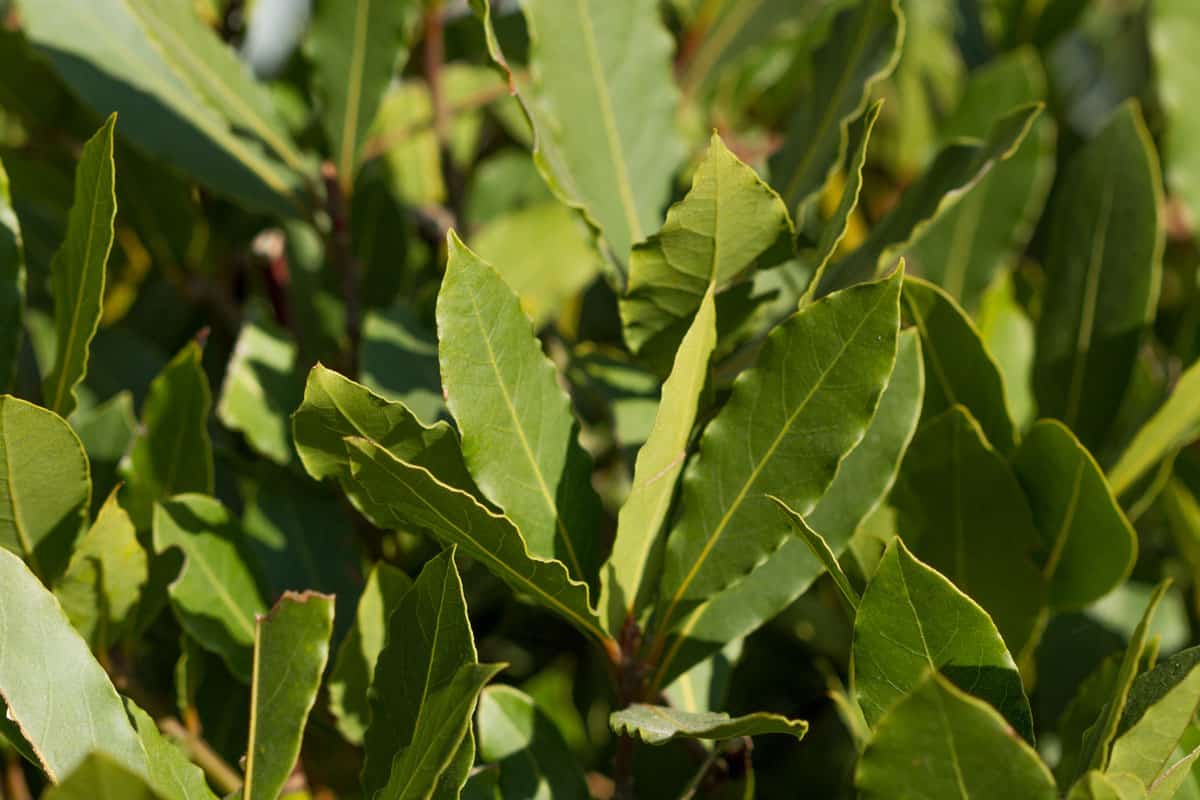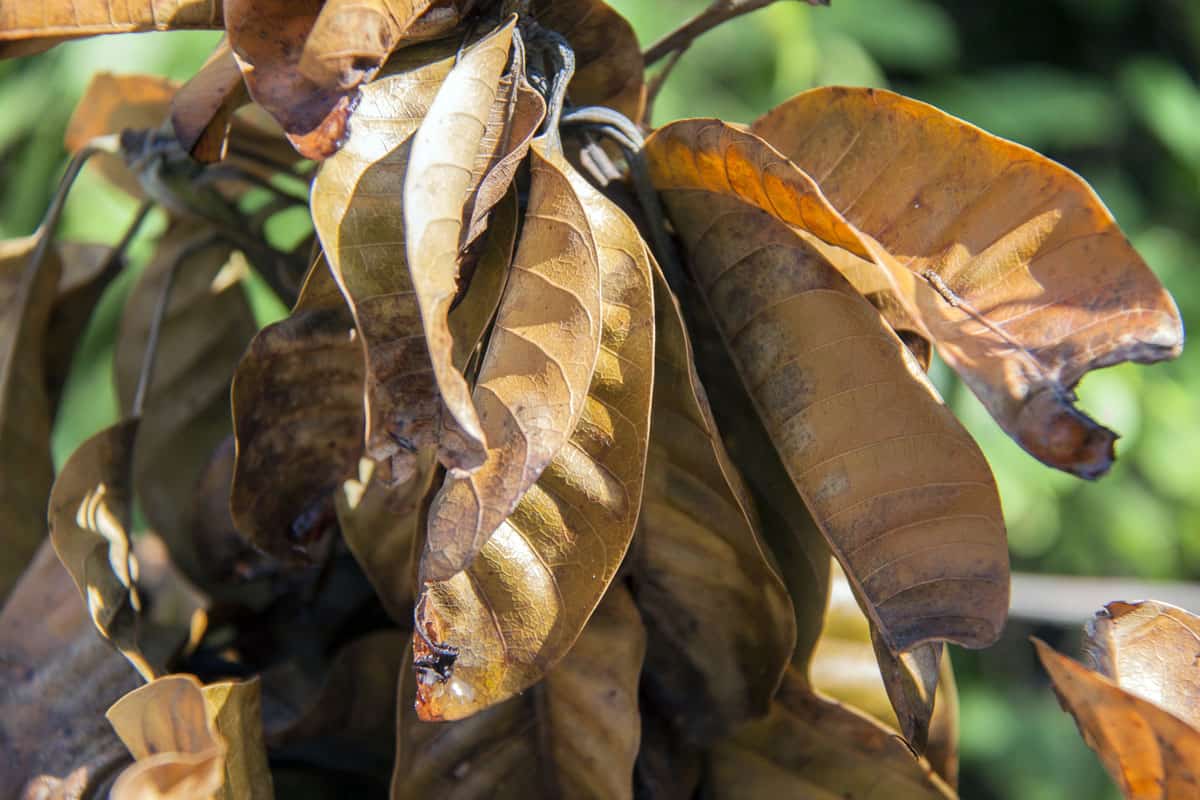Since bay laurel is evergreen by nature, its tree leaves turning brown is the most frequently discussed concern. This situation can seem like a big deal when it occurs. Wondering if you should remove brown leaves from a bay tree? You're in luck! We're here to guide you as we've researched this topic thoroughly.
Brown leaves on bay trees are considered damaged leaves. The health of your bay tree will improve if you gradually remove damaged leaves because they attract pests and diseases.
In this article, we will explore more information about the bay tree. In order to understand why leaves turn brown and know how to handle such a situation. Also, we will share some tips for planting bay trees using seeds. So keep on reading!

What Is A Bay Tree?
The bay tree (Laurus nobilis) ,also known as the "bay laurel" or "laurel," makes a wonderful addition to gardens and homes. The bay tree is an evergreen that not only looks good all year long but also produces food for your garden.

The Mediterranean region's humid climates are where bay trees are indigenous, and they can be grown all year long in warm climates.
The leaves can be used in a variety of recipes as a herb flavoring as well as in many other practical ways. Bay is typically bought as small shrubs or trees from a garden center or plant nursery. It can be grown from seed, but this can be a time-consuming process.
Should I Remove Brown Leaves From Bay Tree?
All leaves that have turned completely brown or yellow should be removed and disposed of far from the plant (preferably burn them). Check on your plant once a week and take off any damaged leaves.
A plant will continue to grow even if some of its leaves are partially damaged, so take care not to remove all of them at once. Instead, remove a few at a time. Damaged leaves draw pests and disease, so gradually removing them will benefit the health of your bay tree as a whole.
Why Do Leaves From Bay Trees Turn Brown?
Here are some typical causes of bay tree browning leaves and an easy cure for each:
Normal Leaf Browning
Leaves aren't supposed to last a lifetime. Even evergreens serve as disposable food factories. Your plant's symptoms are probably just typical aging symptoms as long as new leaves continue to replace the old ones. If your tree is strong and thriving but occasionally sheds brown leaves, there is no need for concern.
Overwatering
Many Mediterranean plants have evolved to thrive in soils that don't retain moisture well. You should therefore modify your watering strategy accordingly.
You should wait until the top inch or two of the soil is completely dry before watering your bay. This will prevent the soil from becoming waterlogged or even on the wetter side of the moist. If you leave your potted plant in a saucer between waterings, overwatering can cause root rot.
Under-watering
Under-watering is rarely a problem as long as container-grown bay trees are exposed to proper elements in any season. Normally enough rainfall comes from nature.
Remember that a bay tree won't wilt when it dries out. Instead, the leaves will turn brown and drop off, indicating that the tree is under drought stress.
Give your bay tree a deep watering once a week if you believe it is stressed out from not getting enough water. Also, a bay tree grown in a container needs regular watering in warm weather, especially in the summer. Make sure the soil is moist, but remember that it shouldn't be soggy.
To help raise the humidity around the tree, you can also try misting the leaves with a spray bottle. And tilt the pot upward to allow for natural drainage. To provide room for drainage from the pot itself, position on two bricks or elevate it.
Underfeeding
It's common for bay trees in pots to be underfed, but you can fix this right away by purchasing a general-purpose 5-5-5 fertilizer and incorporating it into the soil around your plant. Feeding your plant more frequently with the right compost will help keep the leaves away from turning brown.
Cold Damage
Even after winter is over, sudden cold snaps can be shockingly harmful to plants. You might notice an abrupt browning of the leaves as your bay is producing new ones in the spring, just before they fall.
When it gets below freezing, the bay can suffer damage because it is extremely sensitive to low temperatures of 32 degrees Fahrenheit (°F). If you can, bring it inside if possible or take more precautions to keep it warm next year. With proper care, it will recover.
Scale Insects
The brown leaves on your bay tree may also be the result of an invasion. When bay trees are parched and dry, these minuscule insects called scale insects might attack them, requiring urgent removal.
Also, you can restore the natural balance in your garden by luring or introducing predatory insects. As a biological control for scale insects, parasitoid wasps are occasionally introduced.
What Are The Ideal Environment For Growing A Bay Tree?
There are some factors you should take into account when growing your bay tree to ensure its survival and success.
Soil
Bay grows well in soil that is slightly acidic and has a pH that is similar to that preferred by other Mediterranean herbs. You might find it simpler to grow bay in containers as opposed to the ground if your soil is particularly alkaline.
Temperature
For many gardens and situations, a bay can be a good option. However, it's crucial to make sure a bay tree is the best option for your location.
They can usually withstand temperatures of 23°F. But if they are placed in a protected area, they can withstand slightly colder temperatures. Bay is challenging to grow if you reside in a region with particularly cold winters. However, they typically thrive in US hardiness zones 5-9.
Spacing
In contrast to most other herbs, the bay will develop into a small tree. When considering it for your garden, keep in mind that it grows slowly but eventually can reach a size of about 39 feet by 32 feet. If you intend to leave it unpruned and unchecked, this is something to keep in mind.
Waterlogging
Additionally, keep in mind that the bay is not very tolerant of waterlogging. As long as the soil does not become flooded, the bay can be grown in a variety of soil types.
If grown outdoors, it will need soil that drains well. Winter winds can also harm it. So if it is exposed to them, it should be in a protected area.
Location
If the soil and climate in your garden are conducive to growing a bay tree, you should take into account the placement of your specimens then. Bay can grow in containers, as a shrub or small tree, or be pruned into a topiary or hedging.
Select a location that receives full sun, dappled or partial shade. Of course, avoid any particularly exposed areas, frost pockets, or areas prone to waterlogging.
Since you'll be using a bay in the kitchen, it might be useful to have it nearby so you can quickly grab a leaf or two when needed.
How To Plant A Bay Tree?
If you want to quickly harvest the leaves, you can plant a bay tree in your backyard. Bay trees can also be grown from seeds purchased at your neighborhood garden center. Your tree may need a few years to mature and start producing bay leaves for you to use. Here's how to grow a bay leaf plant from a seed.
1. Germinate Bay Tree Seeds
Place your seeds on a large tray filled with soilless seed-starting mix, keeping them 2 inches apart.
Click here to see this soilless seed starting mix on Amazon.
Sprinkle some water from a spray bottle over them before covering them with a little more soilless mix. Place the tray in a warm location that receives about eight hours of sunlight per day. Your seeds may germinate in anywhere between 10 days and 6 months.
2. Choose A Location Or Container
Choose a location for your plant that receives some morning and afternoon shade. You can leave your bay leaves out all year if you live somewhere with a USDA hardiness zones of 8-10.
However, if you reside in a region where wintertime lows drop to 20°F, think about growing your laurel tree in a container so you can bring it inside when the weather turns particularly cold. You might need to repot your tree as it grows if you want to grow it as a potted plant.
3. Soil Preparation
You should have soil that is acidic to alkaline—with a pH range of about 4.5 to 8.3—and make sure that it drains well to avoid root rot whether you are growing your bay tree from a seed, seedling, or small tree.
4. Plant Your Seedlings
You can either plant your growing tree in a sizable pot or in a herb garden once your seeds have germinated. Use well-dug soil if you're planting in a garden or potting soil if you're doing it in a container. Plant your seedling or tree at the same depth it was in the container it came in. You should plant your seedlings as soon as spring arrives.
Conclusion

When the leaves on your bay trees have begun to turn brown or even fall off when you touch them. Carefully remove them while keeping the tree in the position, temperature, and watering routine that worked best for it. This will help prevent disease and unwanted pests from ruining the healthy bay leaves.
For more interesting topics, please check them out below.



Liked the article. How can I grow a cutting from my potted bay laurel tree? It’s making lots of new growth but many leaves are brown and falling. My daughter wants a cutting.